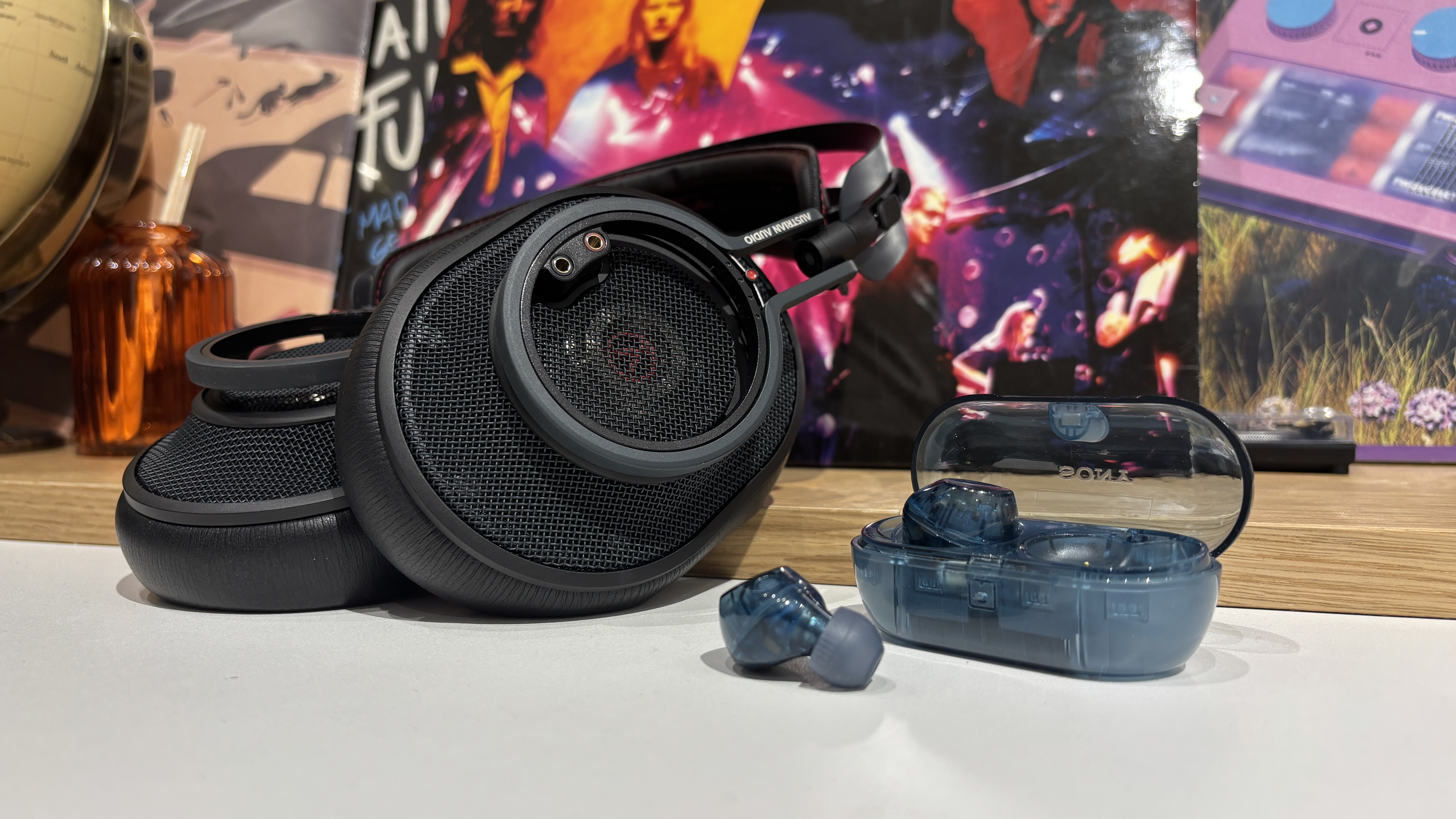Best TVs under $1000: get an awesome QLED TV for less
$1000 can get you a much better TV than you might imagine
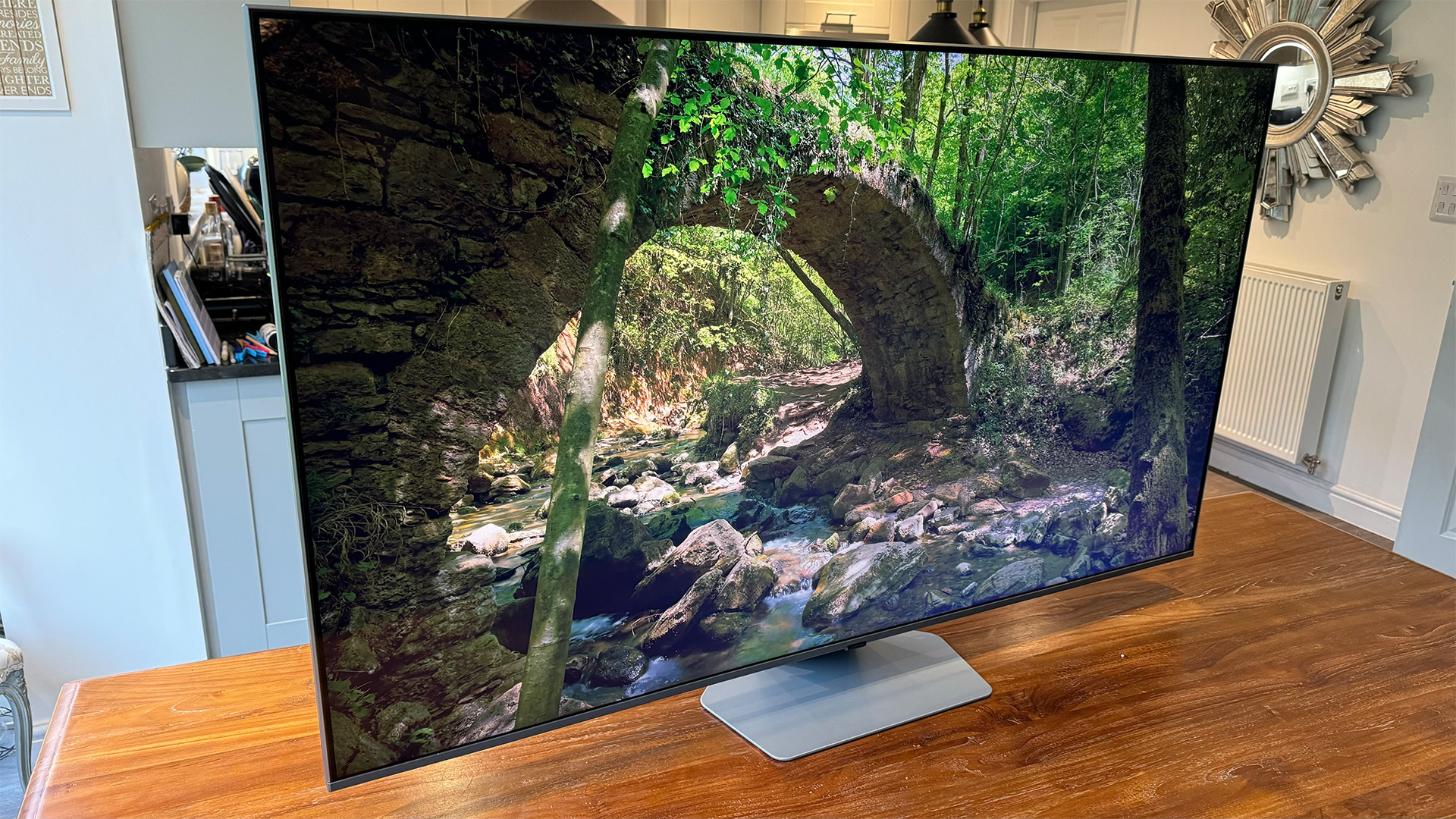
1. The list in brief
2. Best overall
3. Best 42-inch
4. Best 55-inch
5. Best 65-inch
6. How to choose
7. How we test
8. FAQ
9. Recent updates
On the hunt for a top-notch TV that will not break the bank? Well, you have come to the right place.
While it might seem that you have to spend thousands of dollars to get the best TV, this is luckily not the case. Below you will find there are still plenty of TVs under $1000 that have excellent specs and picture quality.
Our current top pick, for example, is a 48-inch OLED model with support for next-gen gaming specs including 4K/120Hz and VRR.
While you won't be able to get your hands on a 75 or 85-inch TV for this price, a £1000 budget will get you a 65-incher if that is what you're after.
Every TV on this list has been tested by our expert team of reviewers with decades of experience under our collective belt. We put each set to the test in our dedicated facilities, pitting them against the best TVs available in that size and price category.
You can read more about our testing process below, or simply scroll down to find the best TV under $1000 for you.
The Quick List
Here you'll see all of our recommendations for the best TVs under $1000, with a brief summary of why you should consider each model. If you want more detail on a model, simply click on it. Alternatively, simply scroll down to get all of the information on all of the TVs in our list – plus some extra models that you might want to consider.
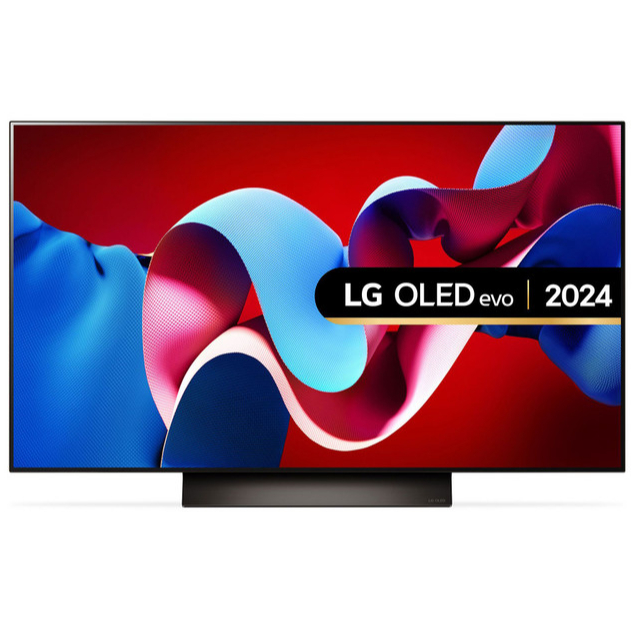
Best TV under $1000 overall
If you’re looking for a new TV and have a maximum of $1000 to spend, the LG's brilliant 48-inch C4 should be your top choice.
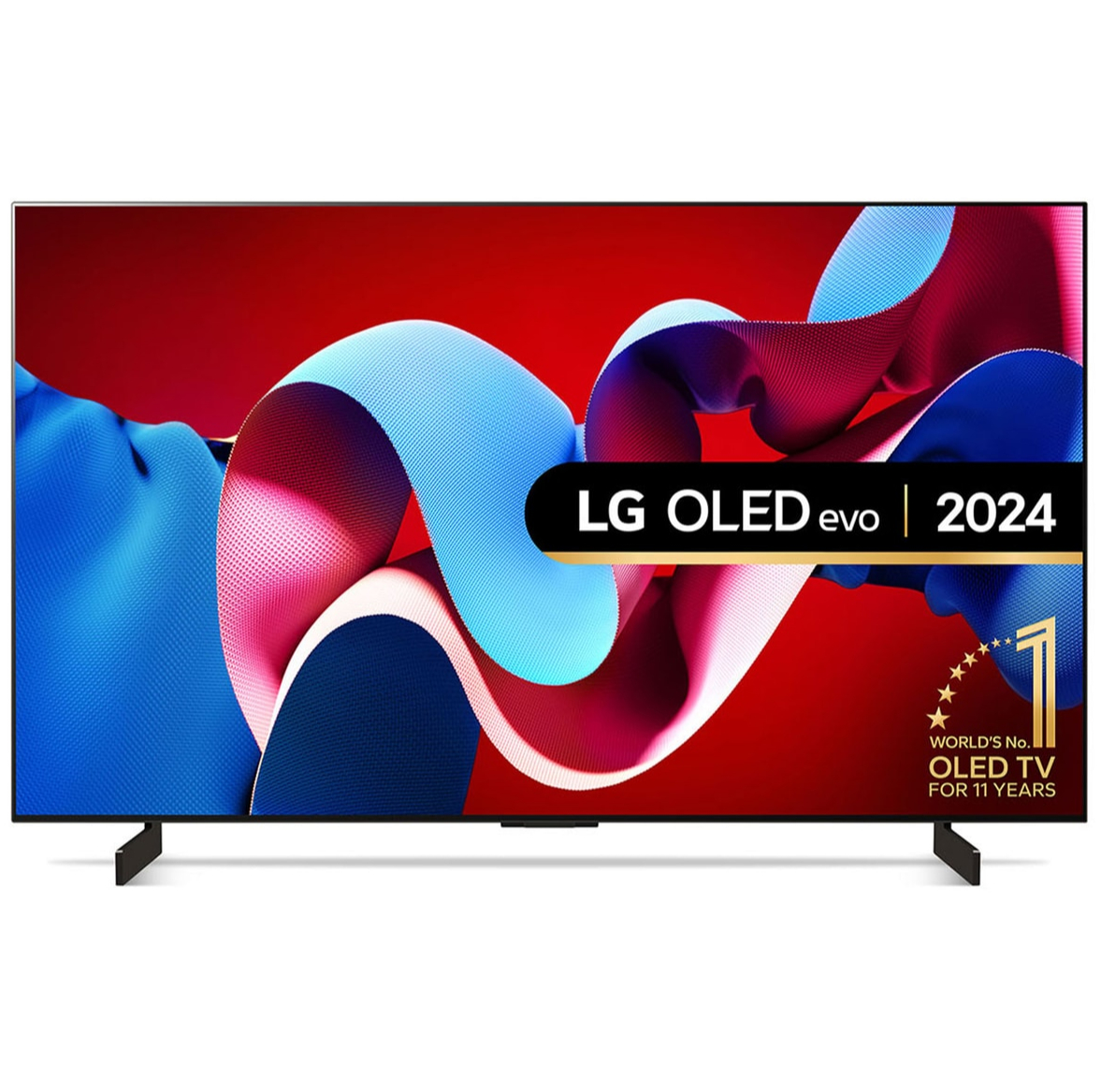
Best 42-inch TV under $1000
This nifty OLED not only offers a detailed and bright picture, but won't take up too much space in your living room.
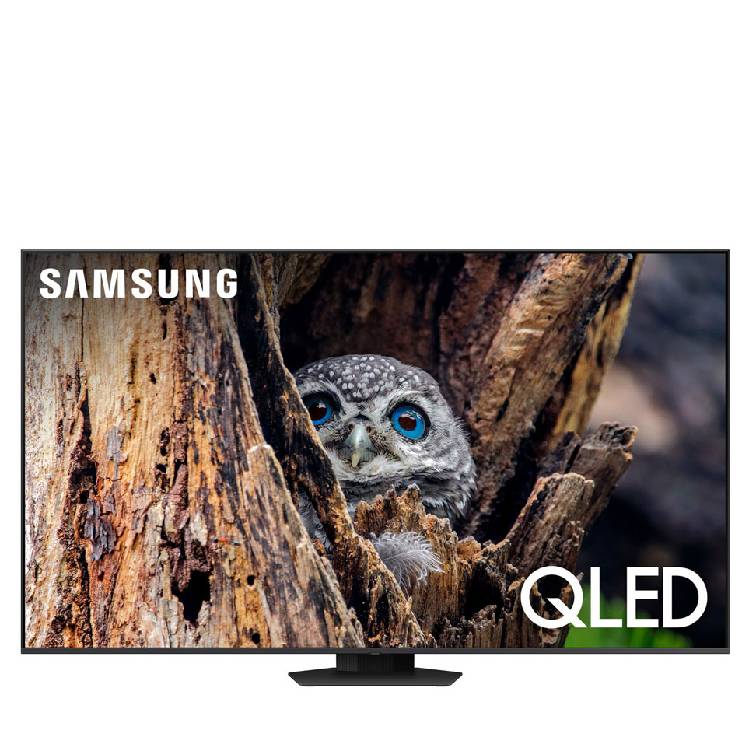
Best 55-inch TV under $1000
Samsung's QN55Q80D has its shortcomings, but it still proves that budget TVs can punch above their weight.
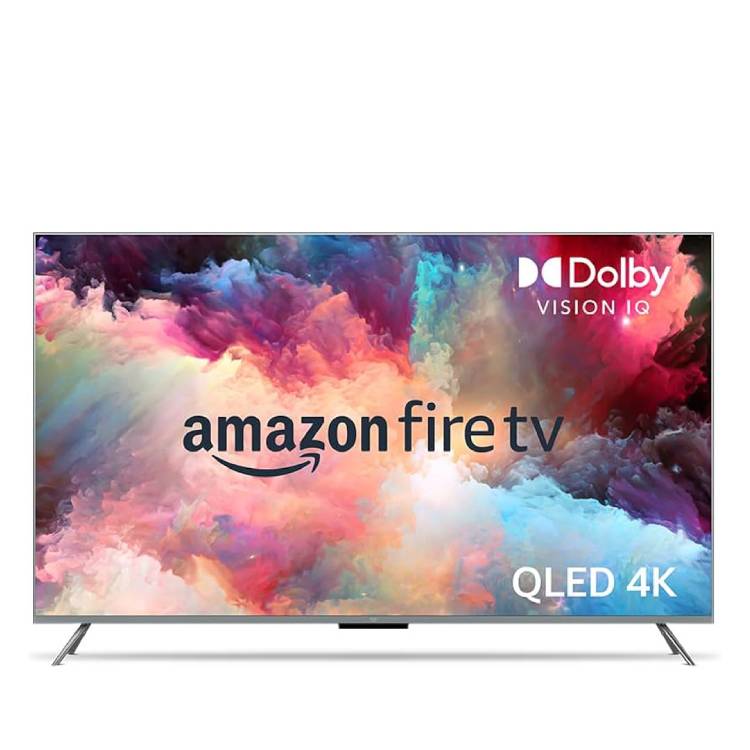
Best 65-inch TV under $1000
It’s not quite as good as the 50-inch version, but Amazon’s 65-inch Omni QLED is still a bit of a bargain.

I’m What Hi-Fi?’s TV & AV Editor, and I’ve been testing TVs (and many other AV and audio products) for over 17 years. I’m obsessed with TV picture quality, but I’m also obsessed with value for money. I believe a great movie experience should be available to all, so while I love flagship TVs, I love TVs that offer awesome bang for your buck even more. That’s exactly what you’ll find on this page – genuinely great TVs that cost less than $1000, all hand-picked by me and the rest of the What Hi-Fi? Reviews team.
Recent updates
10th April 2025: Removed Amazon Fire TV Omni QLED QL50F601. Added LG OLED42C4 and LG OLED 48C4. 29th January 2025: Removed the LG OLED48C3, Samsung UN55CU8000, and Hisense 65U8K. Added the Samsung QN55Q80D, Amazon Fire TV Omni QLED QL50F601, and Amazon Fire TV Omni QLED QL65F601.
The best TVs under $1000 in 2025
Why you can trust What Hi-Fi?
Below you will find full write-ups for all the best TVs under $1000. We've tested each model extensively (plus a huge number of alternatives that didn't make the grade), so you can be sure that our recommendations are properly researched and can be trusted.
Best TV under $1000 overall
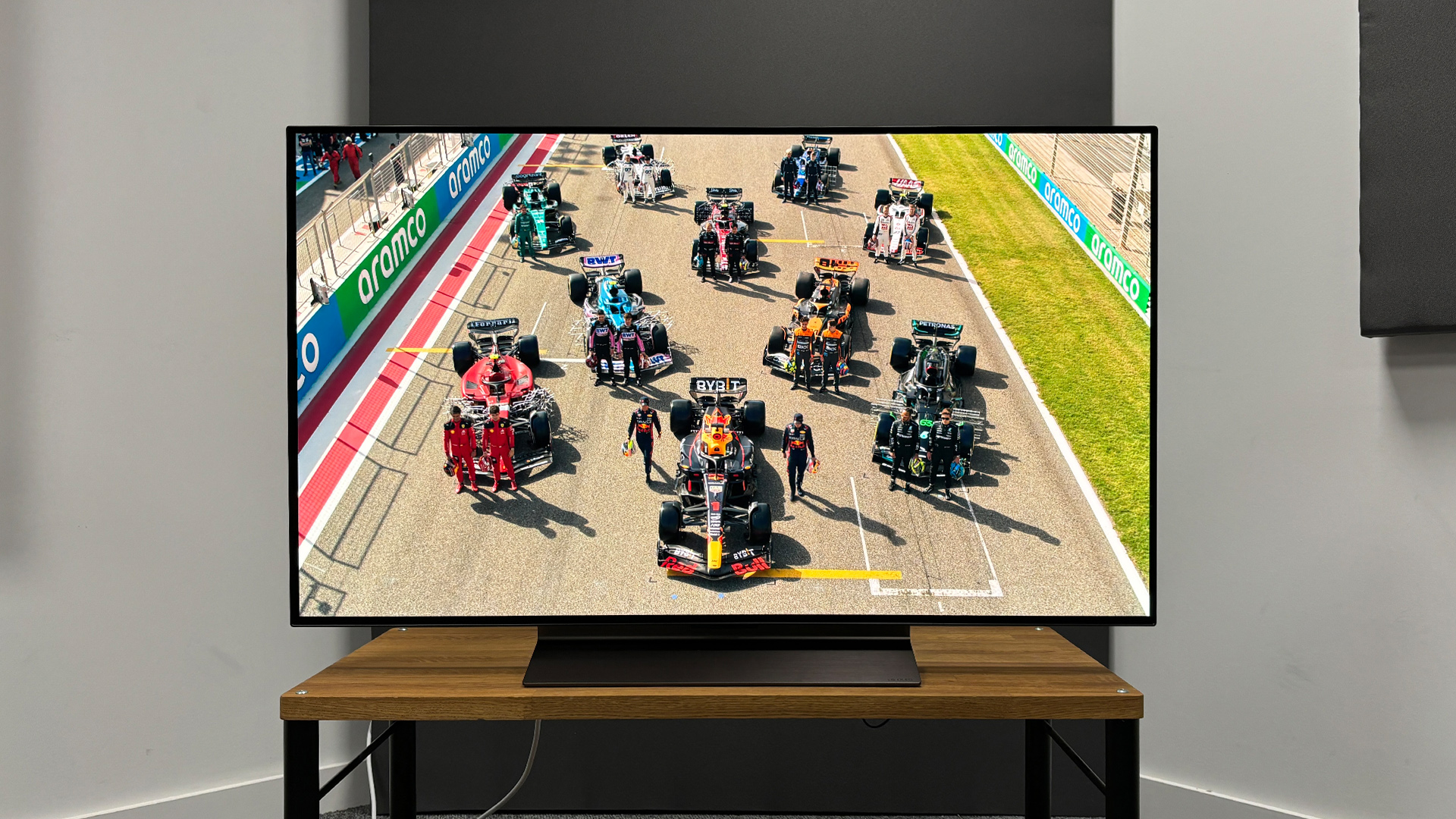
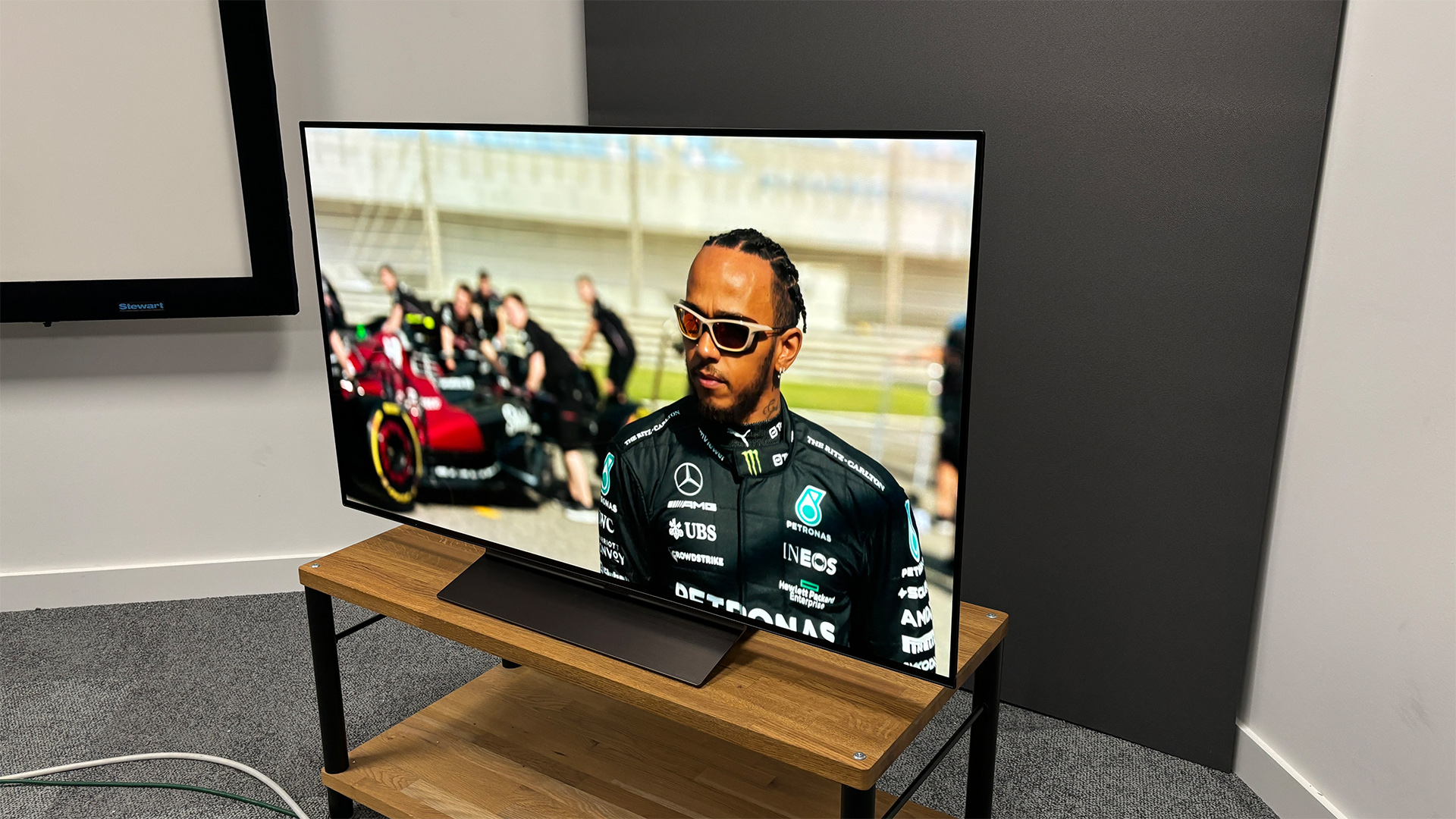
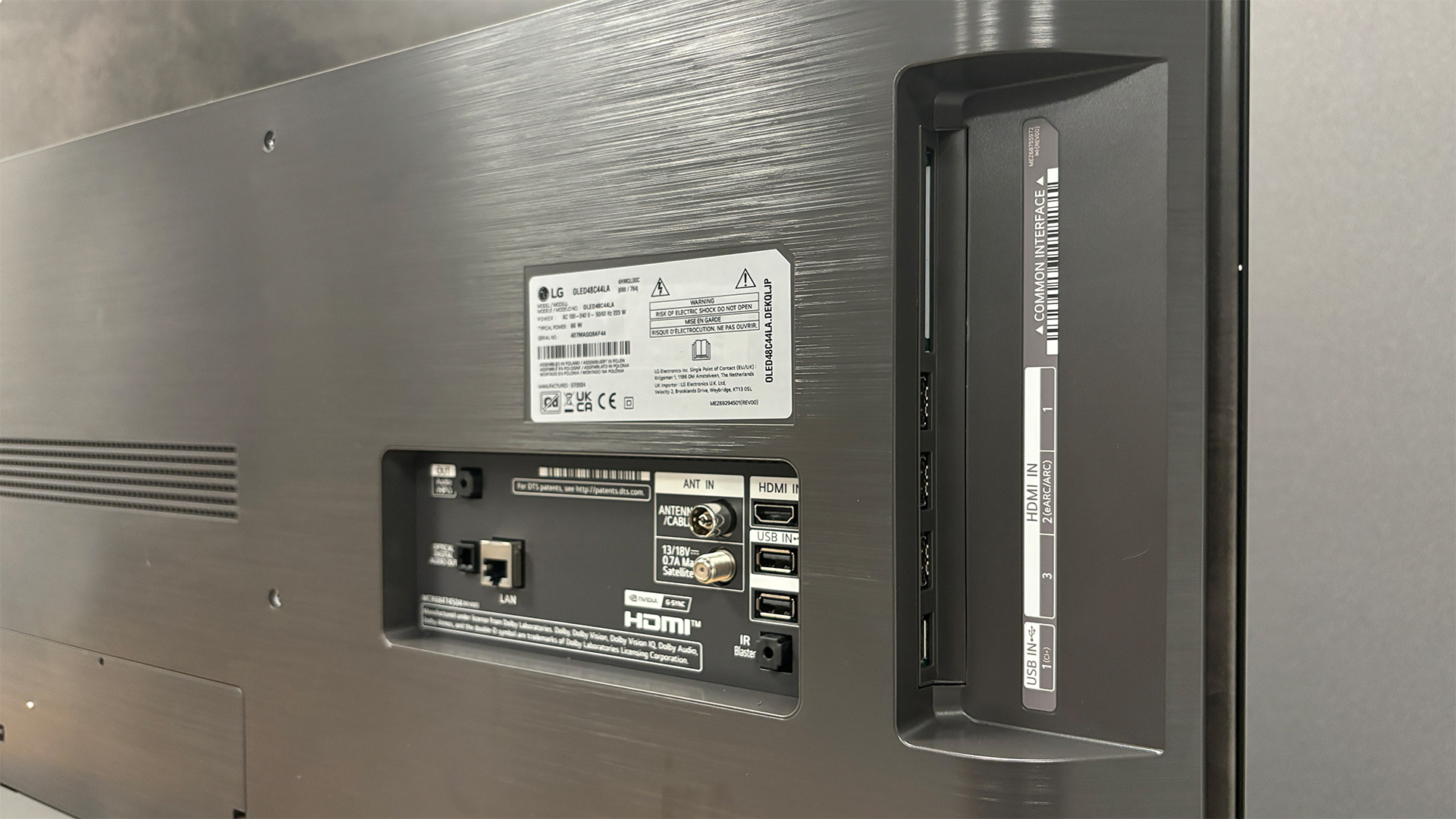
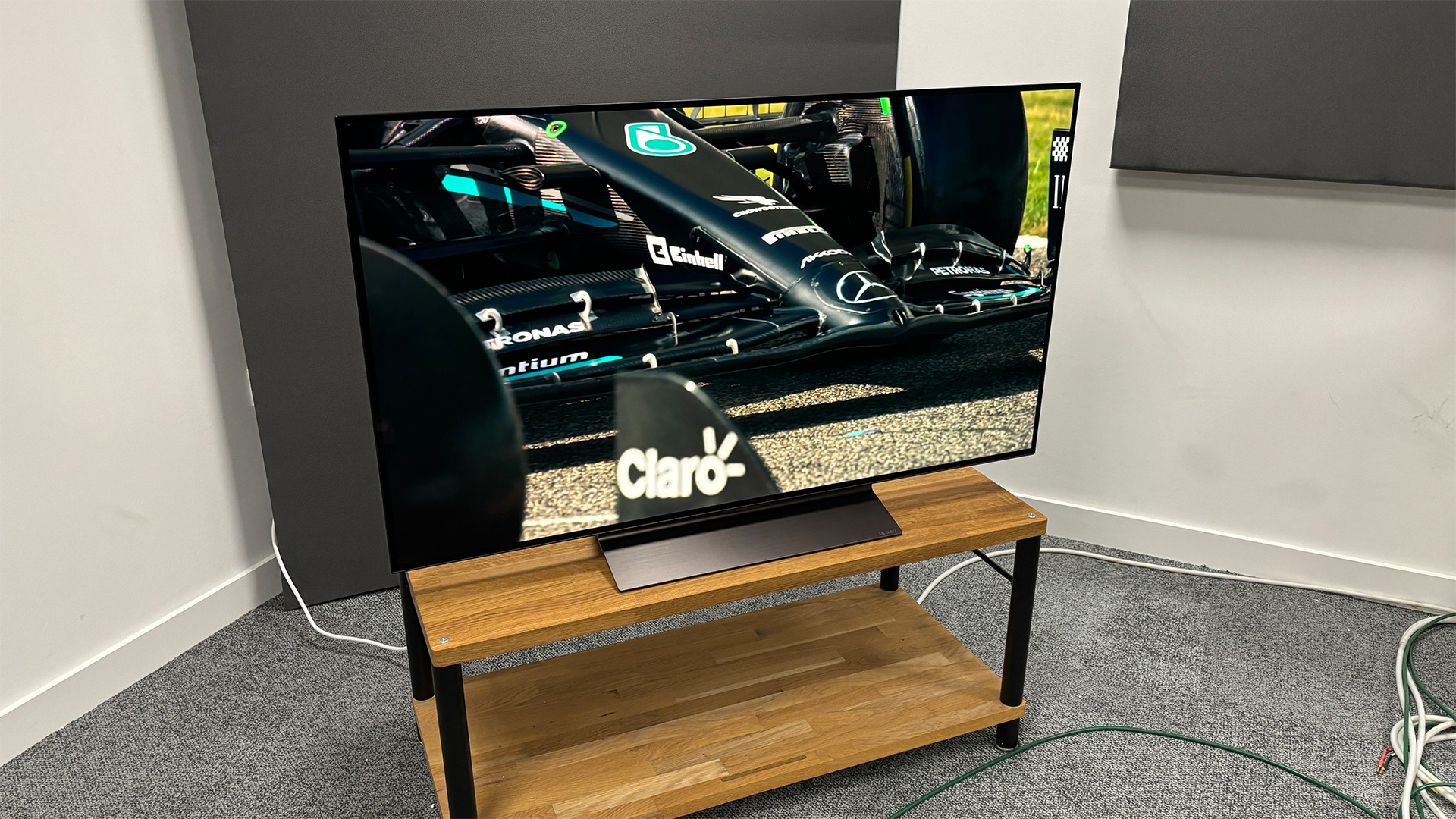
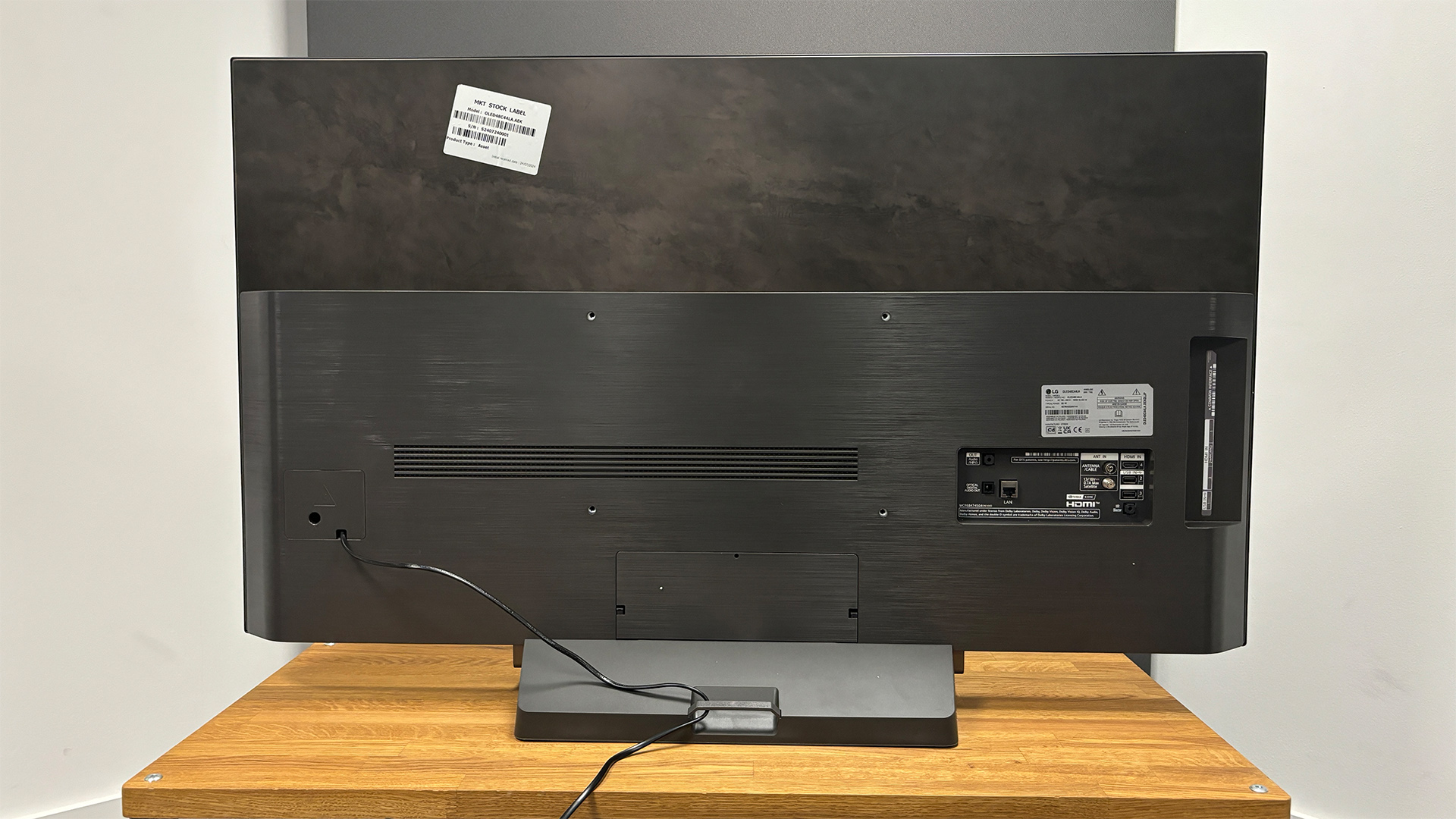
Specifications
Reasons to buy
Reasons to avoid
Despite the newest LG C5 superseding the brand's older model, the 48-inch C4 continues to be incredibly competent OLED that will delivers the goods for cinephiles, sports fanatics and gamers in equal measure.
During testing, its picture quality proved to be rich and incredibly detailed. We watch Mad Max: Fury Road and remark that: "The C4 delivers this film with equal parts punch and composure, with the rich reds and yellows of the smoke flares contrasting beautifully with the natural cool blue of the sky and burnt golden sand."
The 48-inch version might not go quite as bright as its larger siblings, but it still handles highlights very well by managing to look "punchy and vibrant" as well as "controlled and natural."
In terms of audio performance, this TV is a little lacklustre. The bass lacks a needed punch fails to create much sense of immersion. That's why we would recommend adding in a soundbar to the mix to match the top-notch picture quality. Still, vocals do sound clear and it does well with bigger displays of dynamics.
There's a great gaming features set on offer, too. The C4 features four HDMI 2.1 ports, which is great news for anyone planning to connect game consoles or soundbars via eARC. There's also support for ALLM, VRR, and 144Hz compatibility, although the best gaming results will only be realised with a very high-spec PC.
With all that tied into a 48-inch package, this is comfortably the best TV you can buy for under $1000 right now.
Read our full LG OLED48C4 review
Best 42-inch TV under $1000
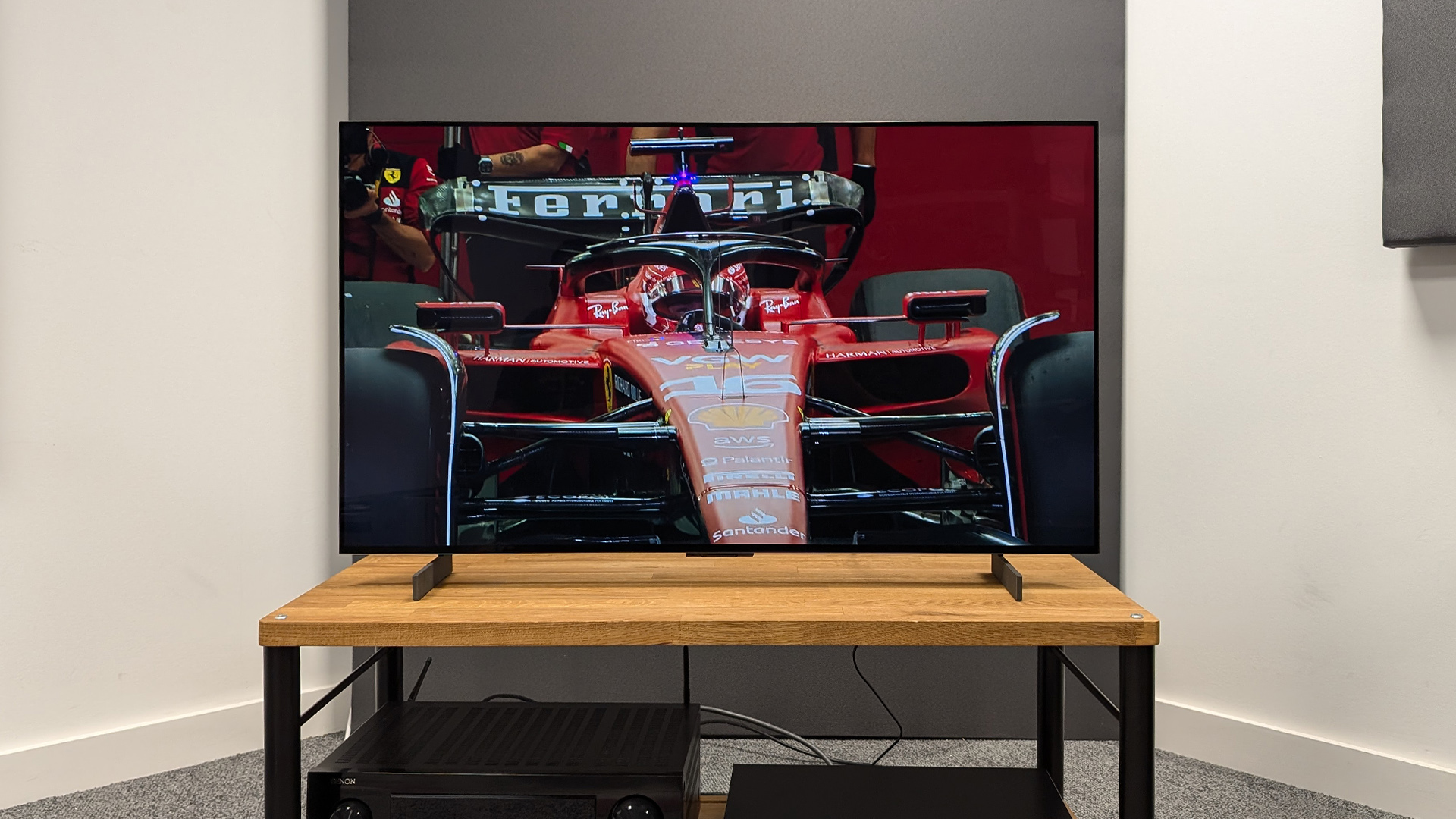
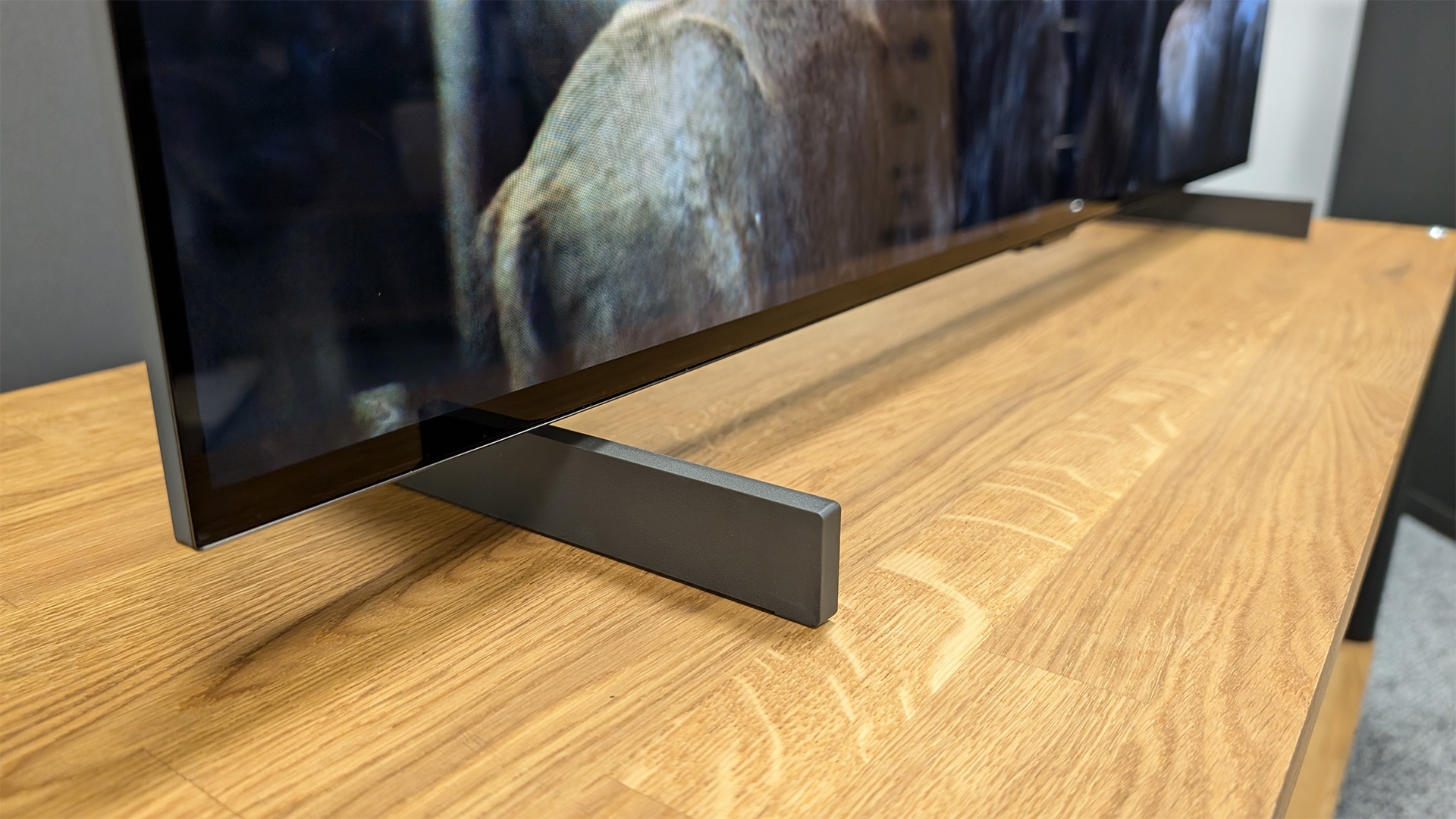
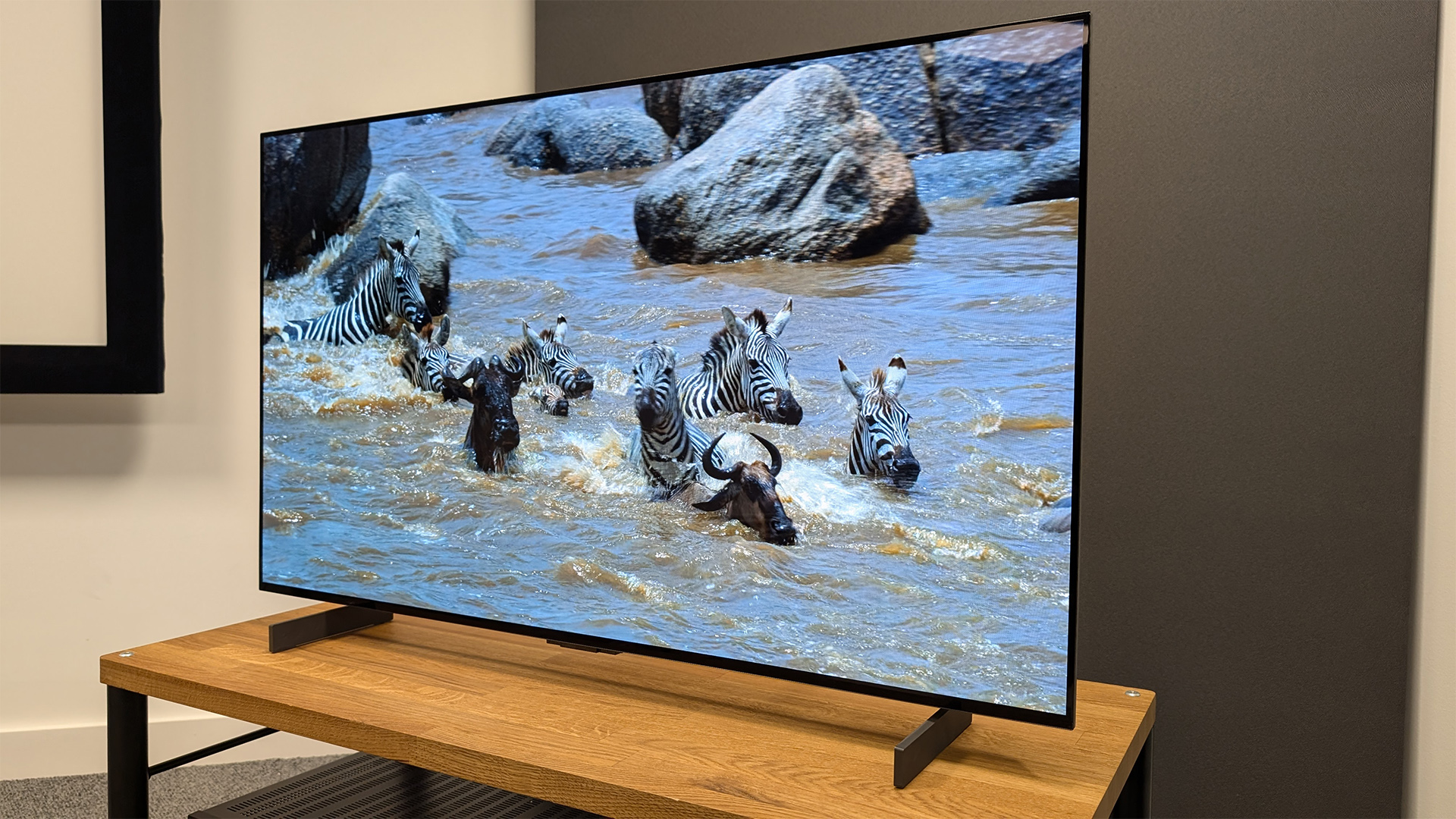
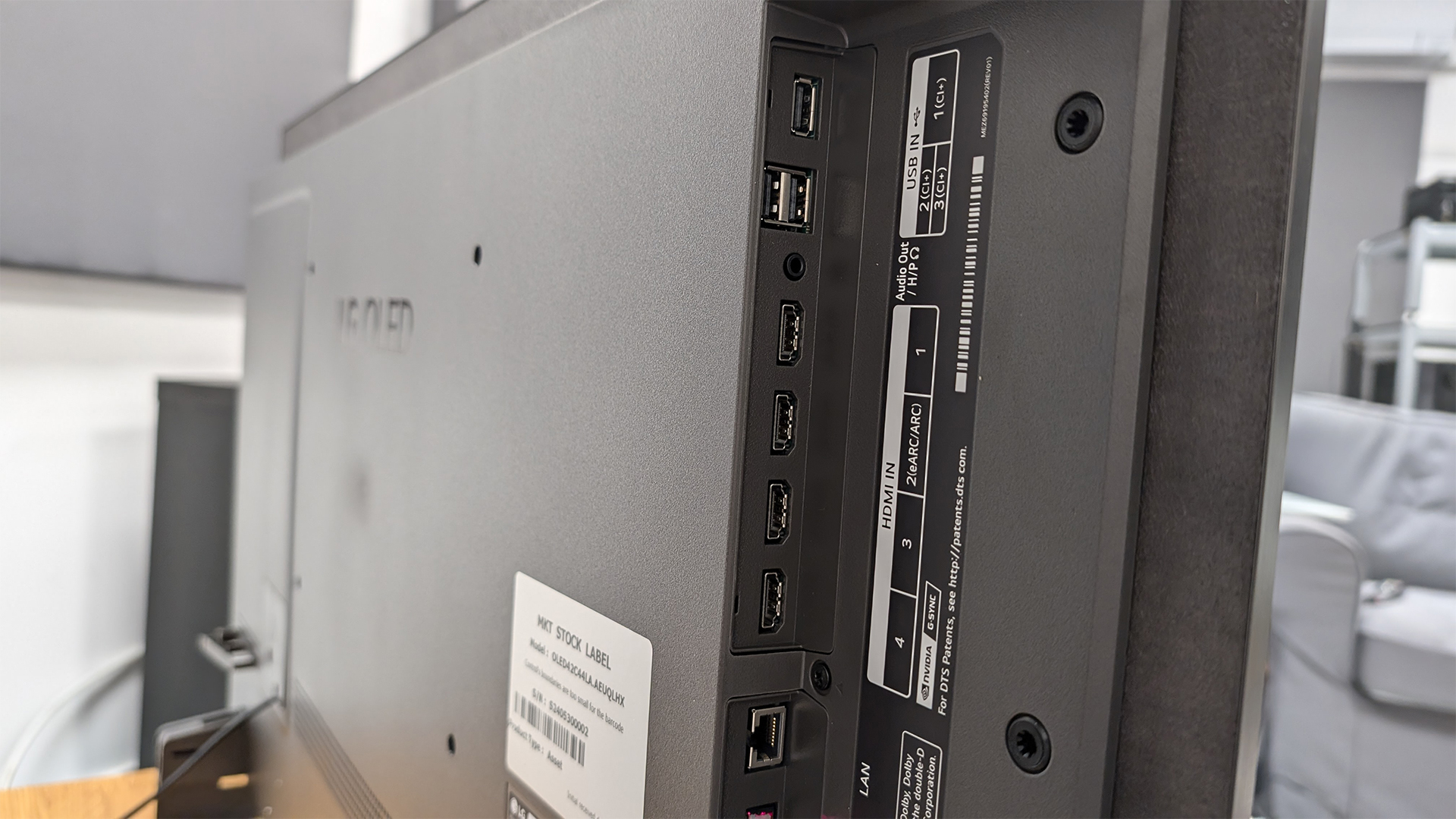
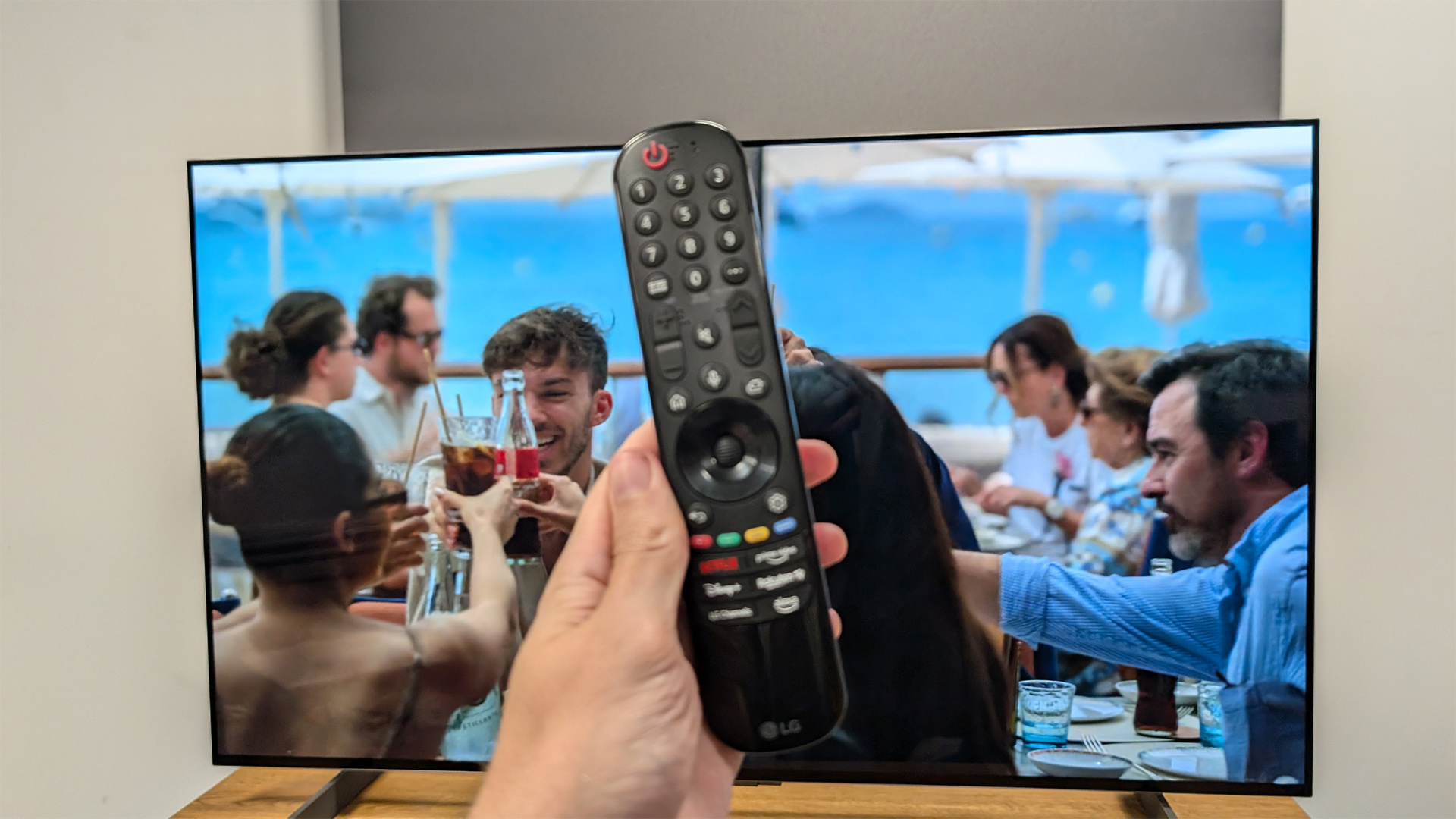
Specifications
Reasons to buy
Reasons to avoid
Before LG's smallest C-Series hit the scene, it felt like a near impossible task to find a good OLED that could fit into smaller spaces. With the 42-inch C4, though, the brand provides top-notch picture performance and a compact design.
We said in our review (where we ultimately deemed it a five-star set) when watching Dune Part 2:
"Movements look natural, and even the most challenging parts of the picture, such as the rapidly buzzing wings of the Ornithopter and characters’ movements during fast paced knife fights, never fall victim to over-smoothening and the dreaded soap opera effect."
Despite its realistic-looking picture, we do note that the colours aren’t quite as warm as its larger rivals, and dark scenes feel slightly flat on occasion.
Like the majority of TVs, the C4 does struggle to pack a proper punch with its sound performance. Its 2.0 speaker system generally lacks precision, especially at the low end. All is not lost, though, as we recommend budgeting for a soundbar to improve the C4's sonic quality.
If you're into gaming, there are some noteworthy specs that will be sure to impress. We're talking four HDMI 2.1 inputs with 48Gbps bandwidth support for 4K/144Hz gaming with VRR and ALLM supported – all packed into a compact set.
It supports Dolby Vision HDR, as well as Dolby Atmos over HDMI eARC. Plus, the built-in webOS smart platform features a range of streaming services including Netflix, Disney+ and Amazon Prime Video.
This is all wrapped up in a neat 42-inch package and, although its audio quality is a little lacklustre, we wholeheartedly recommend this TV for its natural picture and excellent gaming specs.
Read our full LG C4 42-inch review
Best 55-inch TV under $1000
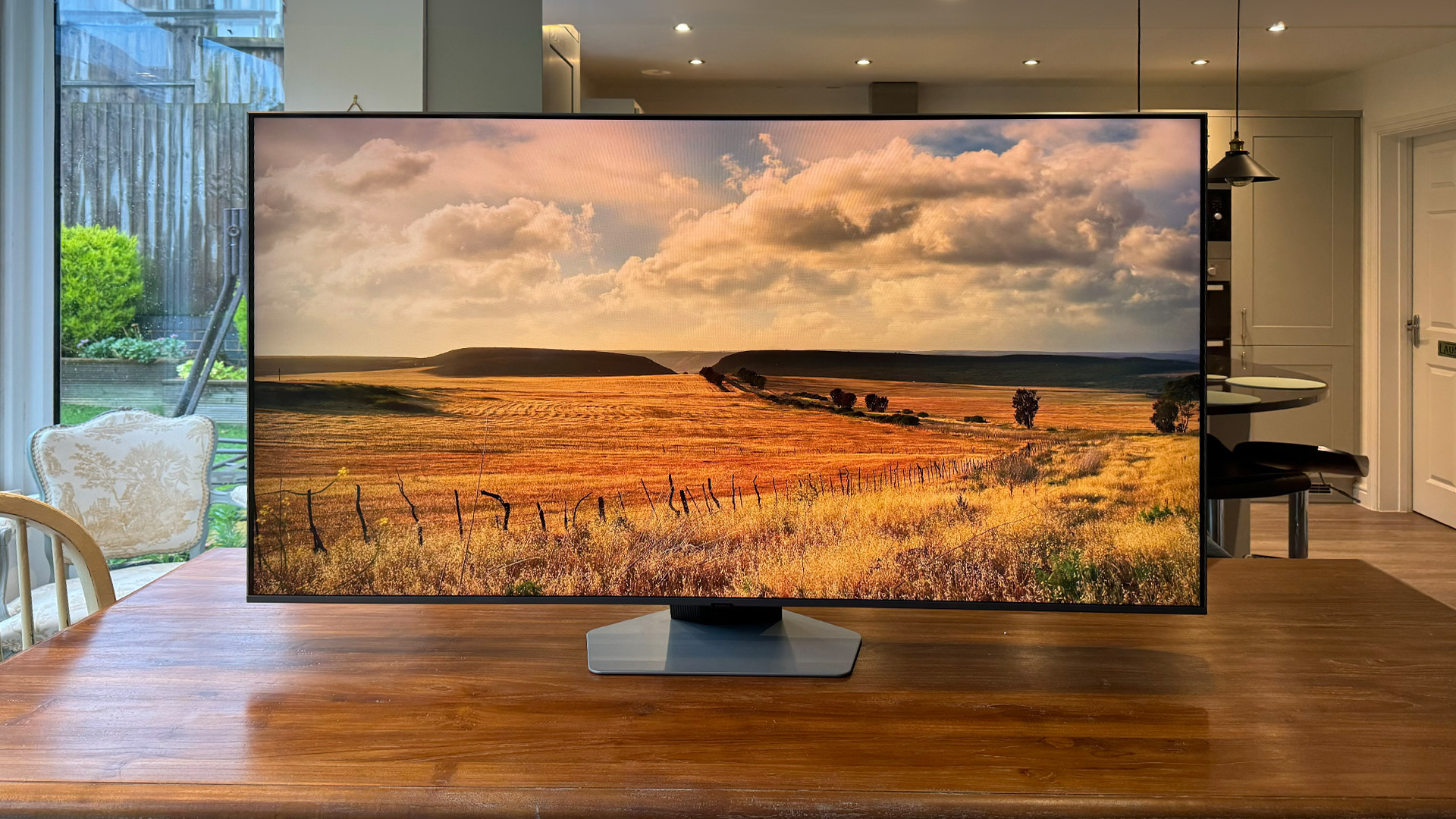
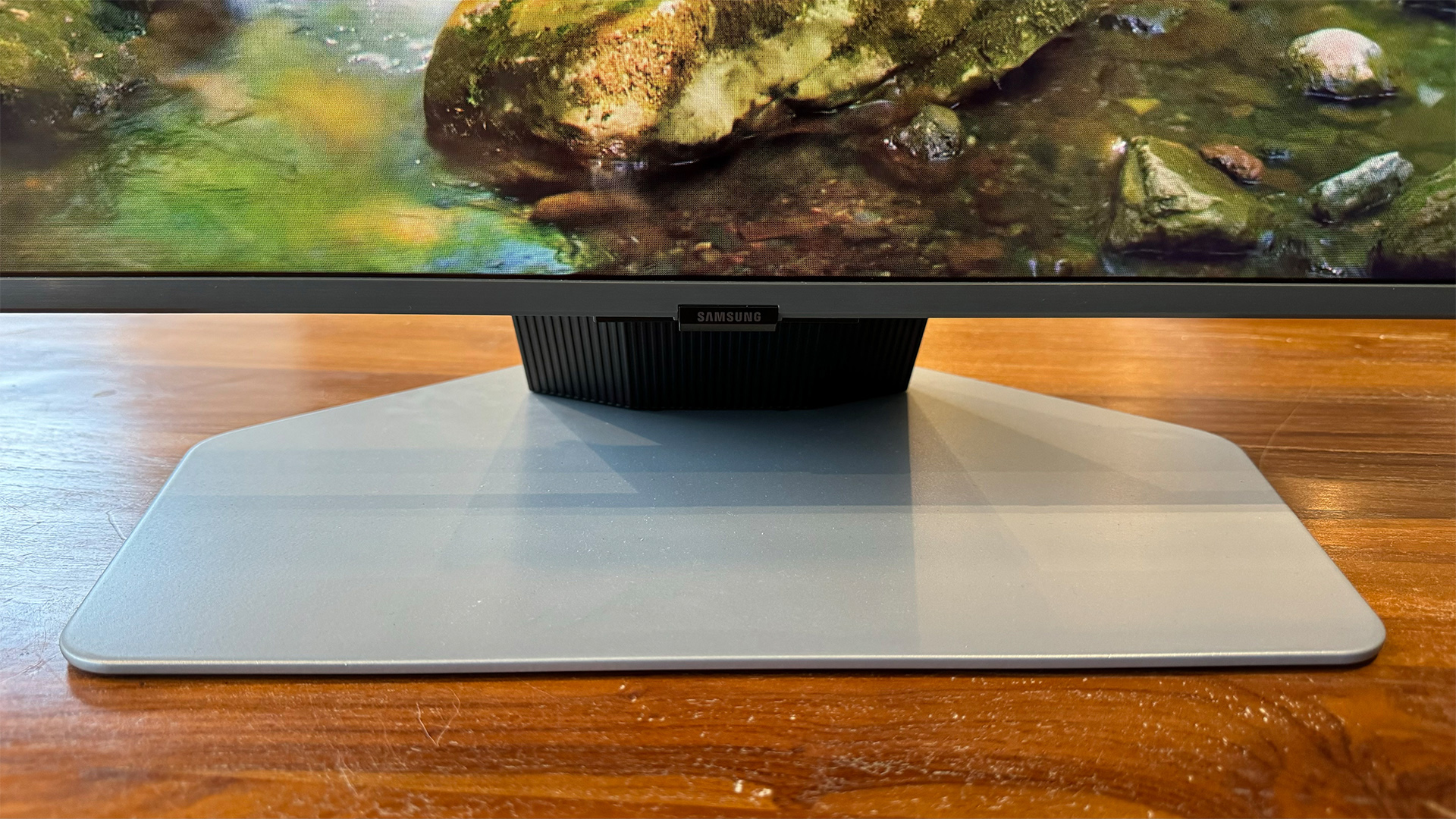

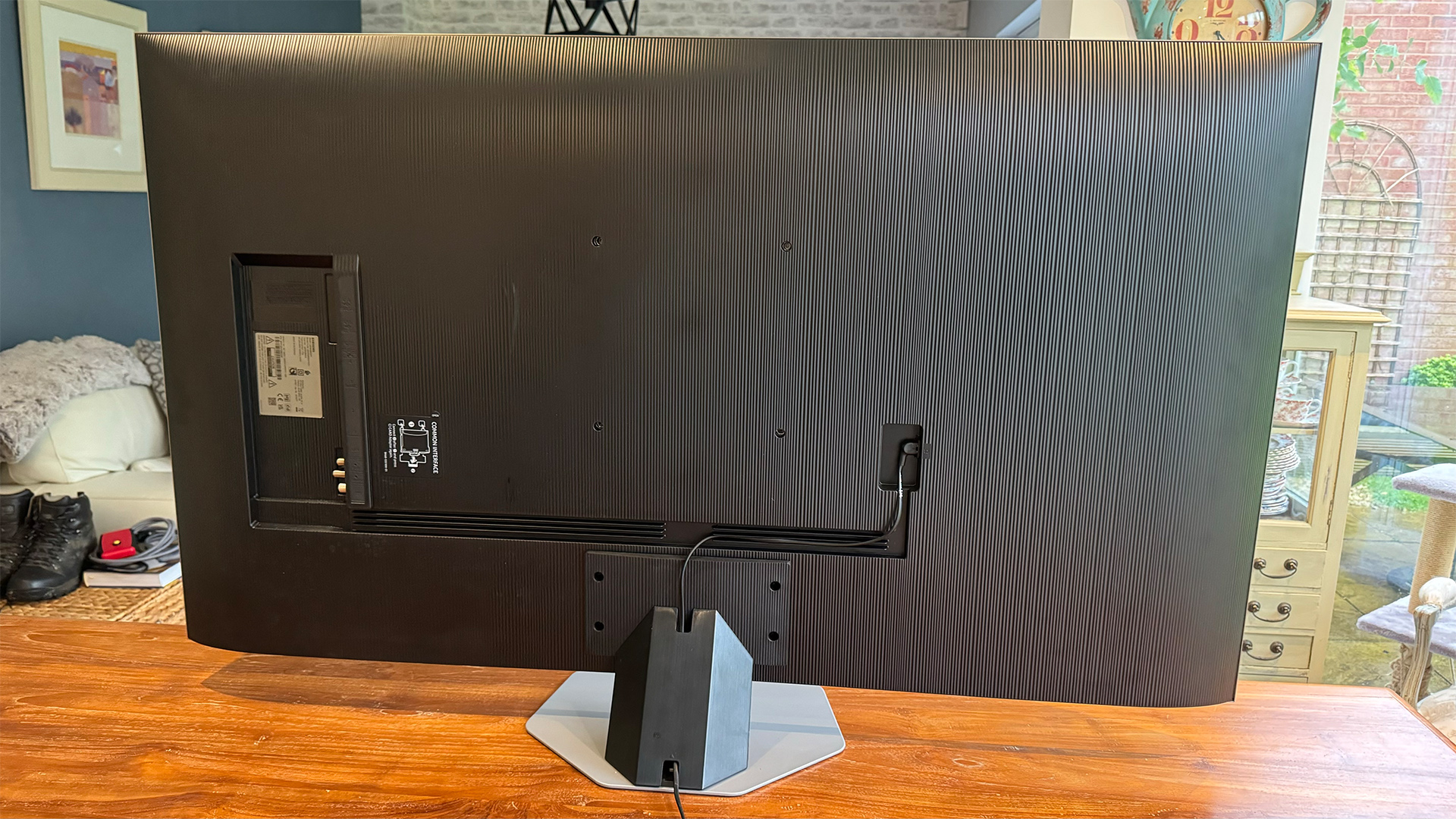
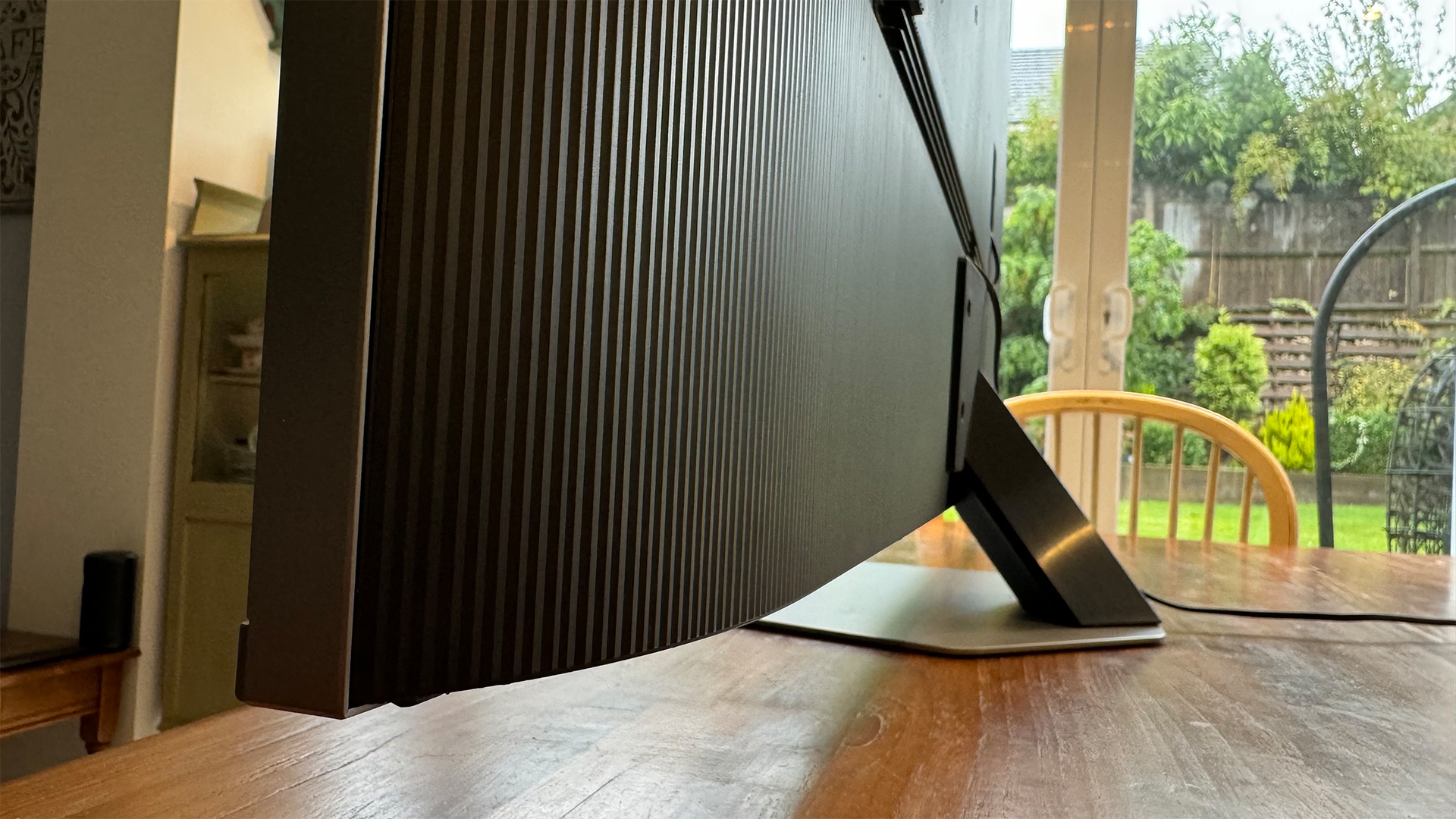
Specifications
Reasons to buy
Reasons to avoid
Samsung's mid-range QLED might not look like anything special, but it resembles the brand's Samsung’s premium TVs more than you may expect.
The 55-inch TV's picture quality is punchy and sharp and more than good enough for most movie fans.
We said during testing: "Native 4K content looks emphatically crisp, detailed and clean, and while a few generations back this intense sharpness on a Samsung TV would have been accompanied by a sense of grittiness and exaggerated noise, it now feels natural and holistic."
Plus, it offers a 'local dimming' system using 100 separate zones which is impressive considering its size. These really elevate the TV's performance when it comes to darker scenes, delivering rich, dark tones that are actually "much more compelling and convincing than those of some much more expensive rivals."
For audio, the TV uses a basic version of Samsung’s Object Tracking Sound system, which manipulates the sound so that different effects appear to be coming from the correct area of the screen. While this works to create a wider soundstage than you would expect at this price, it is not as precise as more expensive models.
In terms of features, there's the VA LCD panel that works hard on contrast, HDMI 2.1 ports that support 4K/120Hz gaming, VRR and ALLM, which is music to gamers' ears. If you're all about streaming platforms, then the Tizen OS system has excellent app support.
It is worth noting that the Samsung model's HDR support does not include Dolby Vision which means you can't get the best from PCs, the latest Xbox consoles and, of course, many streaming services and 4K Blu-ray discs.
Aside from that, the Q80D nails the basics in terms of picture and provides a better sound performance than most TVs at this price, making it an easy recommendation for those on a tight budget.
Read the full Samsung 55-inch Q80D review
Best 65-inch TV under $1000
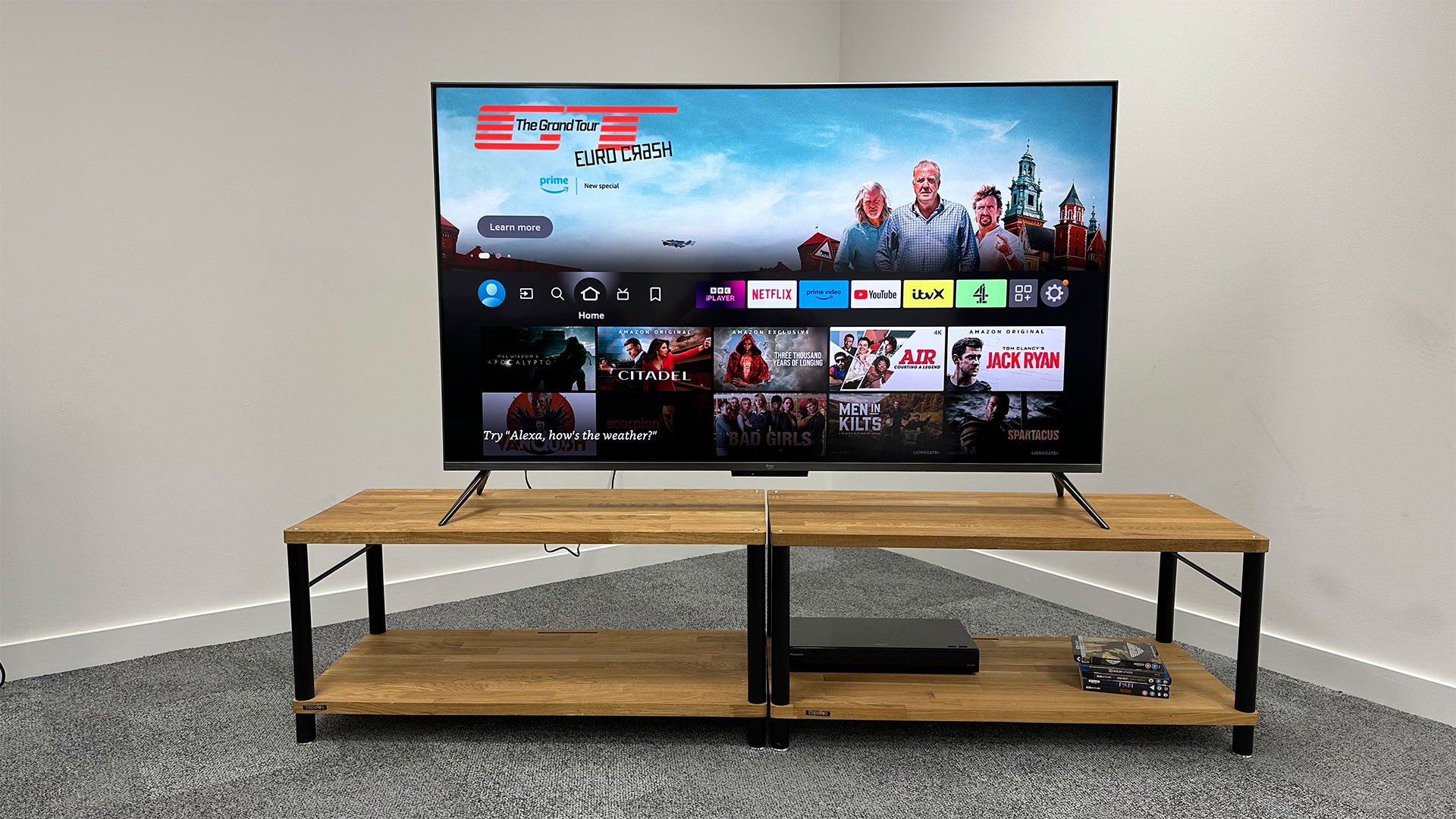
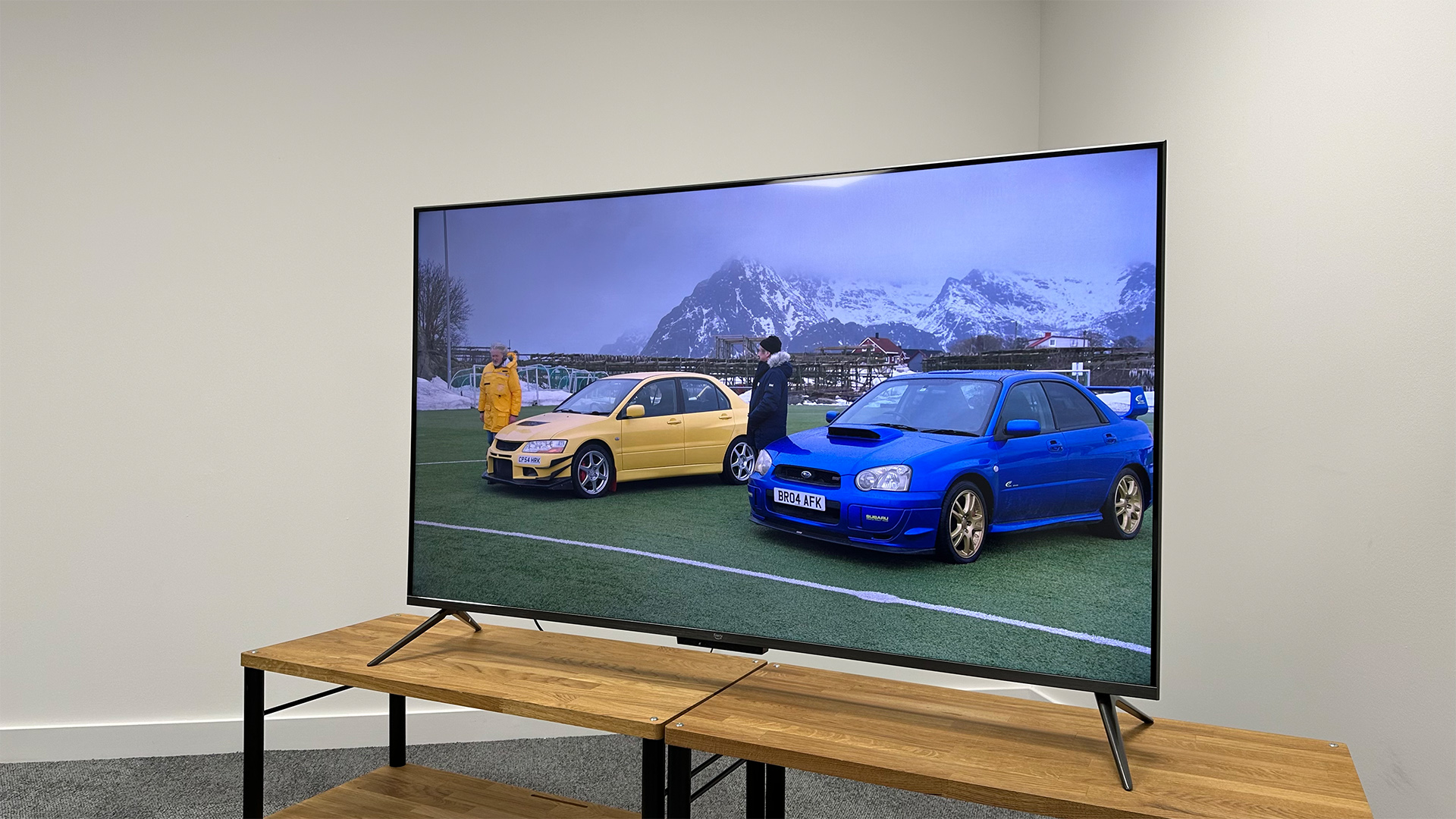
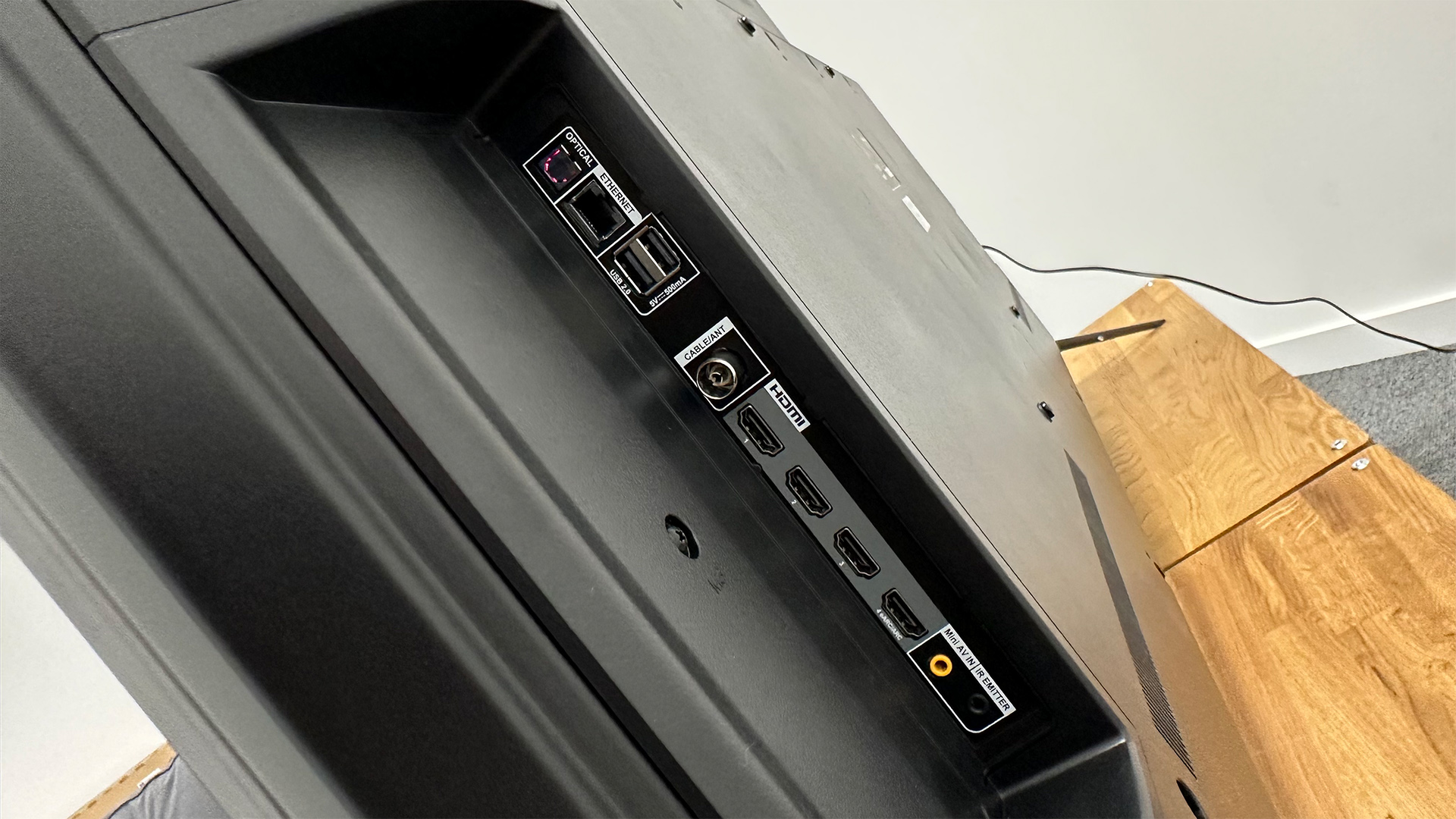
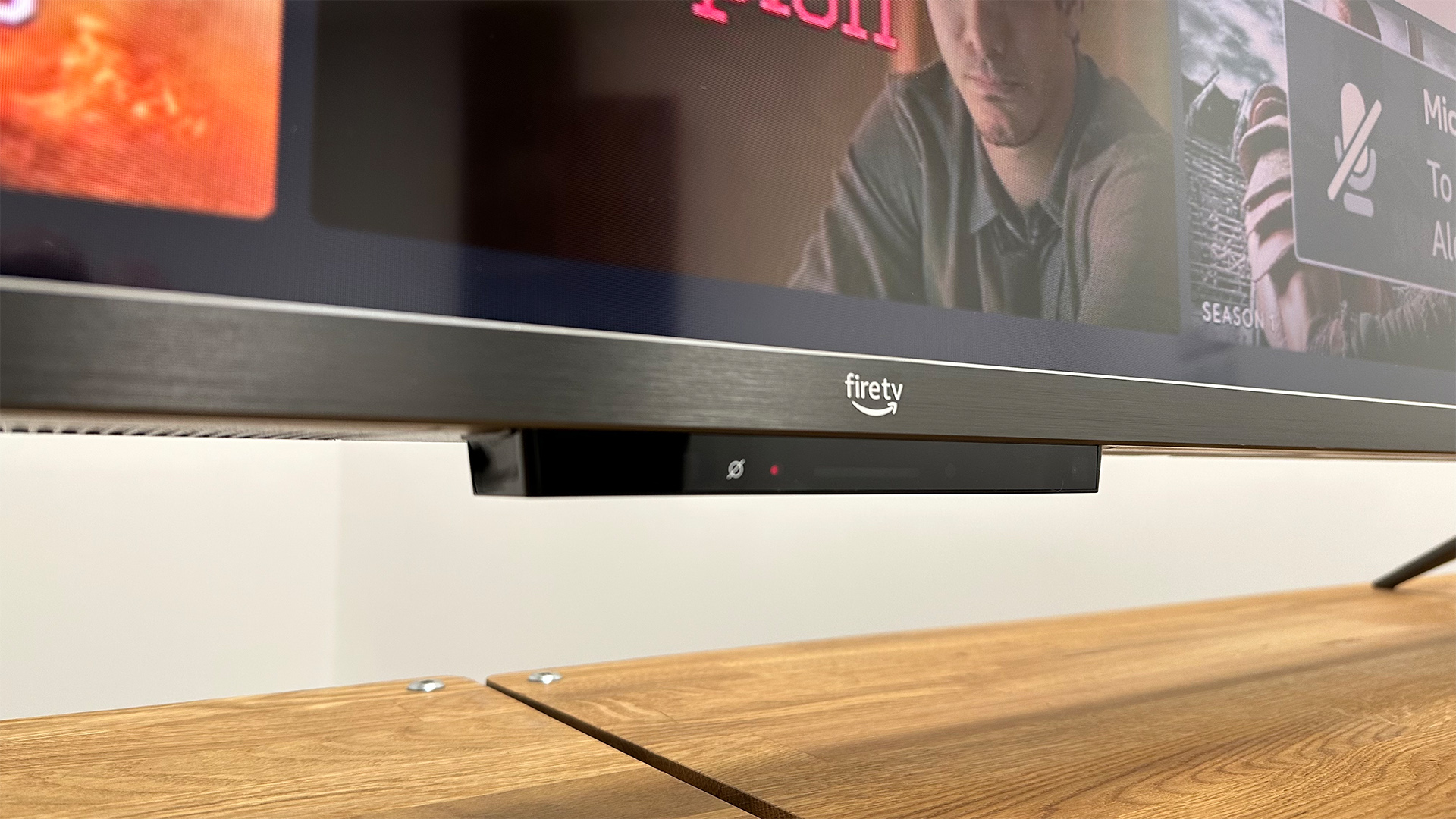
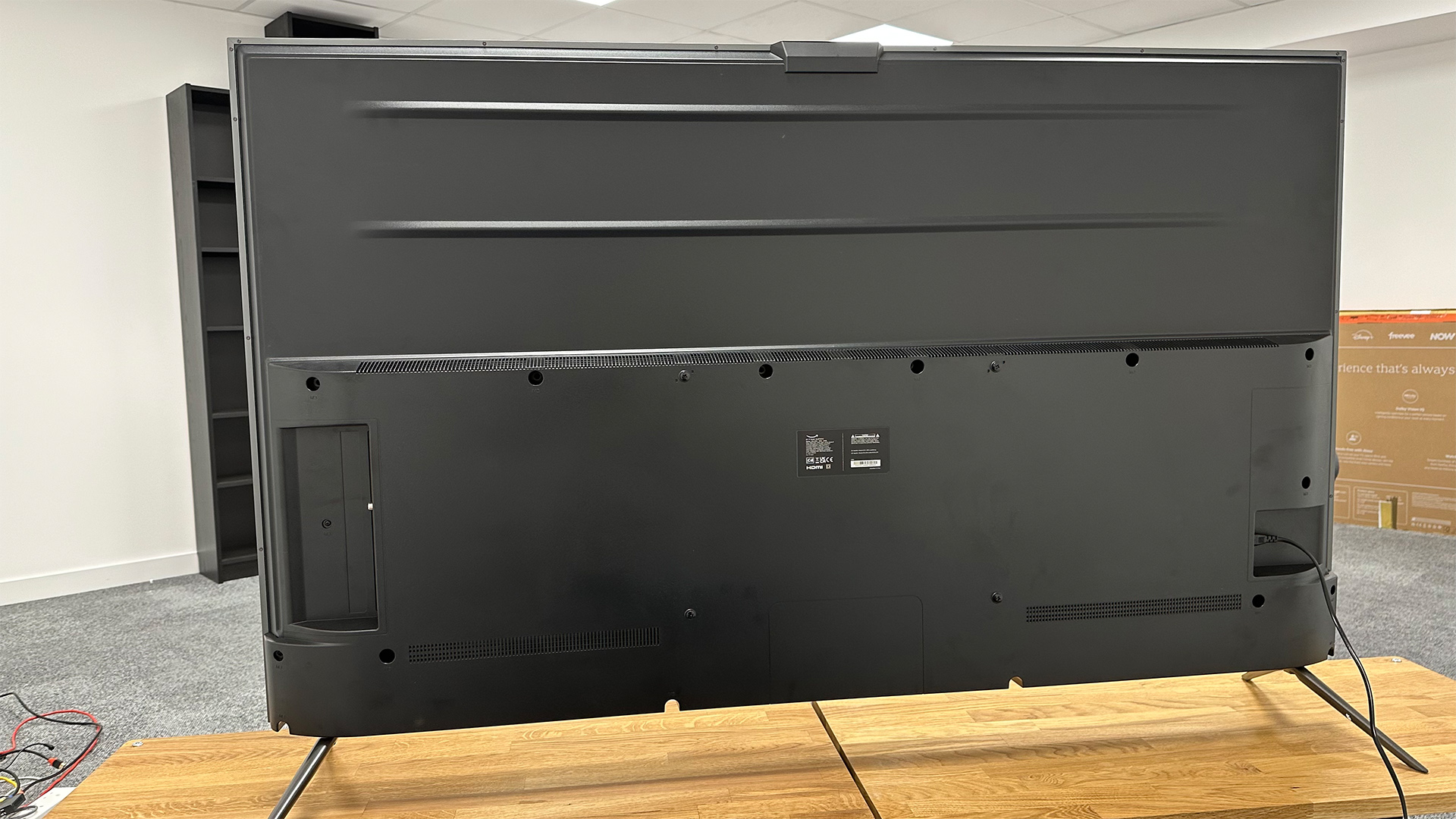
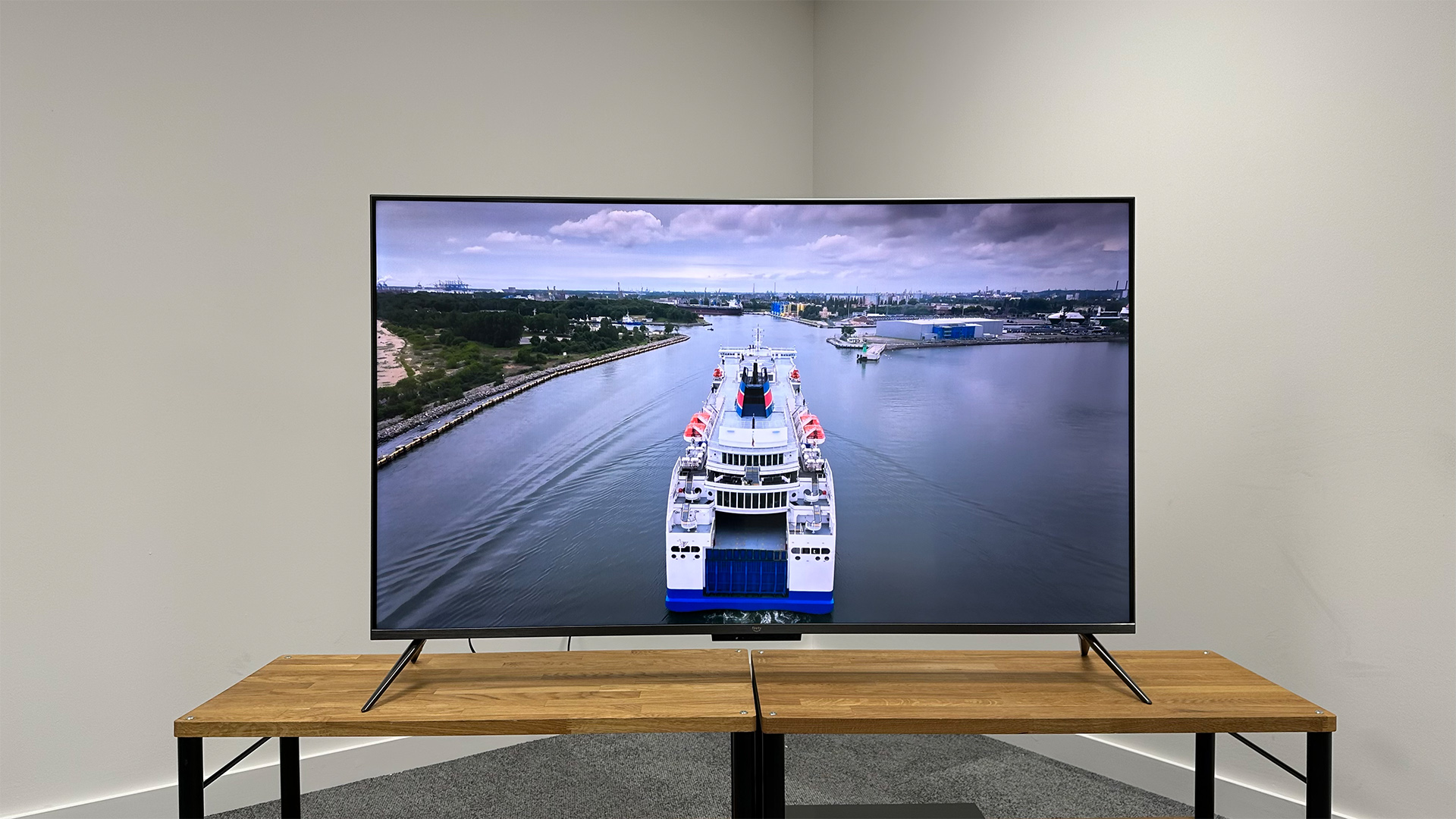
Specifications
Reasons to buy
Reasons to avoid
If you have more space to fill, we'd recommend considering the 65-inch Amazon Fire TV Omni QLED.
It runs Amazon’s intuitive and comprehensive Fire TV OS, which offers all the streaming apps you might need, plus a Freeview tuner for those who still like to watch telly the old-fashioned way.
Support for all the major HDR standards is very welcome, as is the presence of a Dolby Vision game mode, VRR, and ALLM, although 120Hz gaming is off the menu due to the panel’s 60Hz maximum refresh rate.
On the whole, performance is comparable to the five-star 50-inch version: solid, balanced and insightful, with colours that are vibrant and punchy when necessary but also capable of real subtlety.
There are a couple of issues that afflict this TV more noticeably than the 50-inch version, namely a slight lack of shadow detail and some patchiness to colours in low-light scenes, while the motion smearing is also more pronounced, hence the lower star rating. All things considered, though, this is still a TV that belies its price tag.
It’s a similar story when it comes to the sound, with Amazon aiming for balance rather than trying to deliver something that the budget wouldn’t allow.
Nothing about its audio performance will blow you away, but it also won’t do anything to draw attention to its shortcomings. As always, a soundbar is more or less an essential addition if you’re considering one of these as your main TV.
The QL65F601 is a great example of not all TVs from the same range performing identically, so unless you absolutely must have those extra inches you’re probably better off with the 50-inch version. If size really matters, though, this is still a very decent wallet-friendly TV.
Read the full Amazon Fire TV Omni QLED QL65F601 review
How to choose
Getting a great TV for under $1000 has a lot to do with timing. To get the very best at this level, you need to wait for a more expensive TV to drop in price. The perfect time is usually almost a year into the TV's life when stock is being run down to make way for the replacement.
Follow that advice and you will find OLED and Mini LED models within your grasp. But which to go for? The OLED TVs on our list are better overall than the Mini LED options, but they're smaller, too, so it really depends on how big you want to go with your next TV. If you want to save even more money, go for a standard LCD model, though be aware that picture performance won't be as good.
Our strategy of waiting for discounts also means that you can get a sub-$1000 TV with the very latest gaming specs. 4K/120Hz, VRR and ALLM are all on the menu, and you can expect very low input lag.
4K is, of course, a given at this level, and you can expect thorough HDR support, too. Any TV under $1000 should support HLG and HDR10 and the very least, and most will also handle Dolby Vision and/or HDR10+. If you are forced to choose, having Dolby Vision is far more valuable than having HDR10+
Any model at this price should have an excellent smart platform. Samsung and LG TVs have bespoke operating systems, while Hisense, Sony and many others use Google TV. While useability varies a little between them, they all give access to all of the streaming apps you are ever likely to need.
Another essential consideration to make when looking for a TV on a budget is sound. In truth, even premium TVs struggle to produce impressive audio, and inevitably the quality at the lower end of the market tends to be weaker still. Thankfully, budget soundbars are much better than they used to be, and it's well worth saving some money for one of those. If you're dead-set on using your new TV's integrated speakers, look for models that sound particularly clear – you're not going to get a home theater audio experience from a cheap TV, so prioritize clarity.
How we test
What Hi-Fi? has state-of-the-art testing facilities in London and Reading in the UK, where our team of reviewers test TVs, AV and hi-fi equipment against competitors and best-in-class products. We've been proudly doing since 1976.
Naturally, testing TVs doesn't always require these facilities in the same way testing speakers does, but what's important and unique about our testing process is how we review products as a team. No one member handles an entire review, so we can limit individual bias as much as possible and thoroughly double-check our work.
TVs are among the most complicated products to test, since modern TVs offer an extraordinary amount of features, including supporting a variety of resolutions in both standard and high dynamic ranges, a sound system, smart functionality, and gaming features, too. A TV is an all-in-one device, which makes it a challenging proposition for review, but we at What Hi-Fi? are more than up to this complicated task.
For our TV testing, we test for picture quality using a huge variety of content from old DVDs to the latest 4K Blu-rays to a plethora of streamed content. We also don't accept out-of-the-box picture settings that a TV comes with, either. We don't opt for professional calibration, as a customer should never have to do that, but we do spend hours tweaking our settings to get the best out of a set.
In the context of gaming, we'll connect both a PS5 and Xbox Series X to establish what gaming features are supported and what performance is like. We evaluate specific features such as 4K/120Hz, VRR, HGiG and Dolby Vision gaming, Game Mode latency, and more, and we measure input lag using a Leo Bodnar device.
Naturally, we'll also test every major app offered on a TV as well as what kind of AV quality each service delivers through it, making sure you can get the best experience wherever you go. We do thoroughly test a TV's speakers, since many will rely on them, but we almost always advise any TV worth more than a few hundred dollars is paired with a dedicated sound system.
We're all about comparative testing at What Hi-Fi?, so we make sure not only to review how good a particular TV is at a certain price, but also how a TV performs in the context of other TVs at its size. Just because something's great value doesn't mean it's a great product.
All our guides and reviews have no input from PR companies, sales teams, or even manufacturers or engineers, and we strive to deliver the most honest, unbiased coverage our team of experienced professionals in the AV and consumer tech worlds can muster. For more information about What Hi-Fi? check out our About Us page.
FAQ
What is the best gaming TV under $1000?
The best gaming TV under $1000 is also our favourite TV under $1000 overall – the Samsung Q80D.
It's a rarity, particularly at this level, in that all four of its HDMI sockets are 2.1-spec and support the latest gaming features, including 4K/120Hz, VRR, and ALLM, while the HGiG setting makes it a doddle to get the latest HDR games looking just as they should.
On top of that, input lag is super-low, and the TV's sharp, dynamic and vibrant picture quality lends itself perfectly to gaming.
What is the best HDR TV under $1000?
The best HDR TV under $1000 is also the best $1000 TV overall – the Samsung Q80D. It might not have the pixel-level contrast control of an OLED panel but HLG, HDR10, HDR10+ formats are all supported.
Recent updates
- 10th April 2025: Removed Amazon Fire TV Omni QLED QL50F601. Added LG OLED42C4 and LG OLED 48C4.
- 29th January 2025: Removed the LG OLED48C3, Samsung UN55CU8000, and Hisense 65U8K. Added the Samsung QN55Q80D, Amazon Fire TV Omni QLED QL50F601, and Amazon Fire TV Omni QLED QL65F601.
- 10th May 2024: This page has had a complete redesign. We have added the Quick List, author info and new FAQs, and all of our recommendations have been replaced. We have also added 'Also' Consider' options for each entry.
MORE:
Bargain or bust: Should you buy a refurbished TV?
Fancy splashing out? Browse today's best TV deals
Or feast your eyes on the best 4K movies and TV shows
Get the What Hi-Fi? Newsletter
The latest hi-fi, home cinema and tech news, reviews, buying advice and deals, direct to your inbox.
Tom Parsons has been writing about TV, AV and hi-fi products (not to mention plenty of other 'gadgets' and even cars) for over 15 years. He began his career as What Hi-Fi?'s Staff Writer and is now the TV and AV Editor. In between, he worked as Reviews Editor and then Deputy Editor at Stuff, and over the years has had his work featured in publications such as T3, The Telegraph and Louder. He's also appeared on BBC News, BBC World Service, BBC Radio 4 and Sky Swipe. In his spare time Tom is a runner and gamer.
